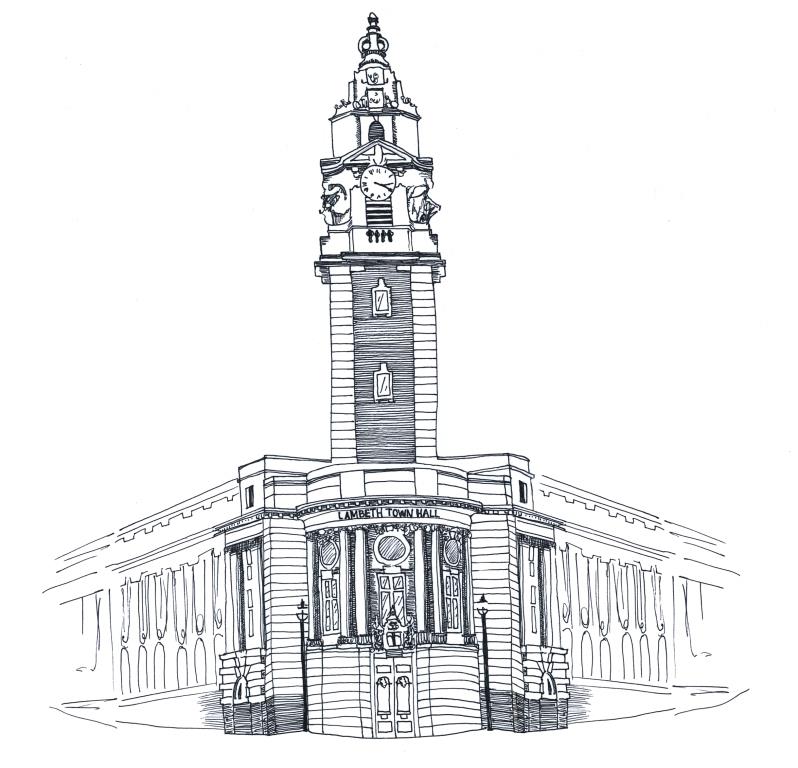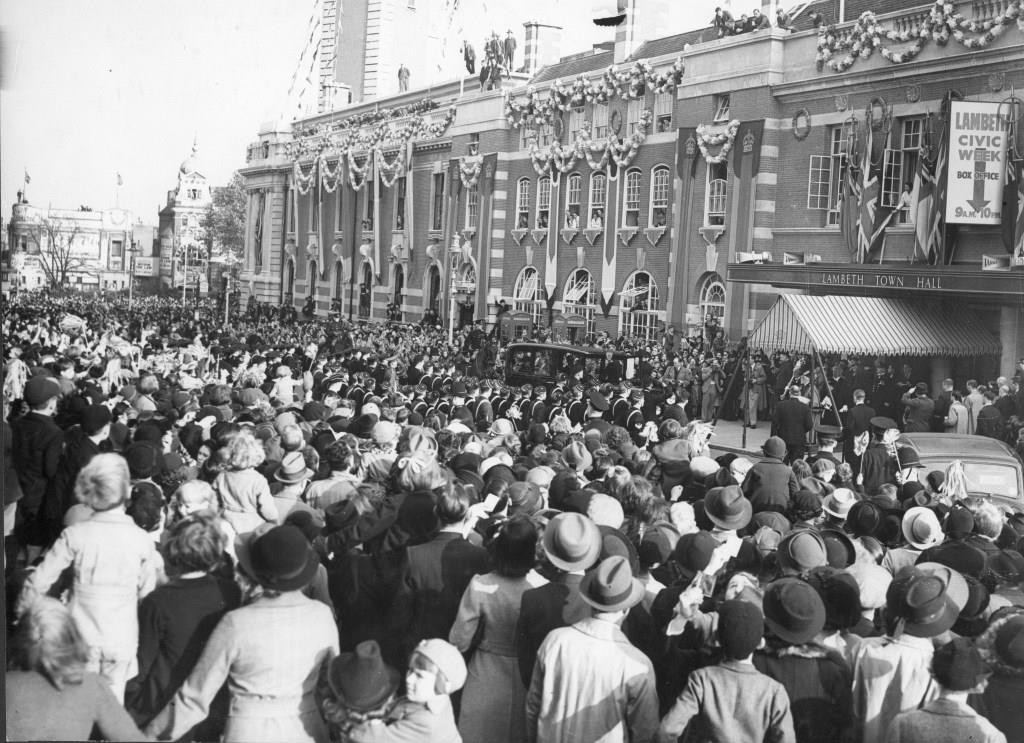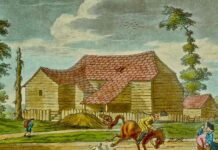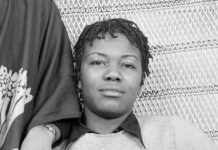Written by Sophie Gainsley, as part of Brix & Mortar, a celebration of Brixton’s landmarks

As South London’s population rose, the Metropolitan Borough of Lambeth, founded in 1900, decided that the old Town Hall at Kennington Green was no longer enough. The corner of Brixton Hill and Acre Lane was chosen as the site for a new central Town Hall and an architectural competition launched. Out of the 143 entries, two architects stood out – Septimus Warwick and Herbert Hall. Their design won and was officially opened three years later by King George V and Queen Mary.
Faced with narrow red bricks, carved white Portland stone, the tower of the hall stands 134 feet high and features an illuminated clock which chimes every quarter of an hour. Though the clock face seems small from the ground, each dial is six feet in diameter. The bell which loudly sounds out each hour weighs two tonnes, is five feet in diameter and is struck by a 75 pound hammer.
Among the many commemoration stain glass windows and plaques is a memorial is dedicated to Violette Szabo, Lambeth heroine of the French Resistance. Szabo was working behind the perfume counter of Le Bon Mache, a department store in Brixton at the start of the Second World War. She went on to become a renowned French-British secret agent.

A sweeping Sicilian marble staircase rises on both sides to a circular hall. Adorned with painted plaster moulds and carved Sicilian white and Siberian green marble, the circular room is perhaps the Town Hall’s most lavishly decorated room.
Within the walls you will find the Mayoral offices, the offices of the Chief Executive and the Lambeth information centre that you can always turn to for help and advice.







The Town Hall was opened by TRH The Prince and Princess of Wales, later King George V and Queen Mary. The opening ceremony took place on April 29th 1908. When the Tower was originally constructed there was no clock, this was installed at a later date. The four sculptures on each corner of the Tower represent Art, Literature, Science and Justice. The picture of the Royal visit is when Queen Mary returned to offically open the assembly rooms. I have many pictures of the town hall during its construction and before it was offically opened plus the Prince of Wales addressing full council. These images are rarely seen and provide a superb insight into a building at the heart of Brixton that has stood for over 100 years. If the Brixton Blog is wishes to do a larger spread building on the article published by Sophie, I am happy to be of help.